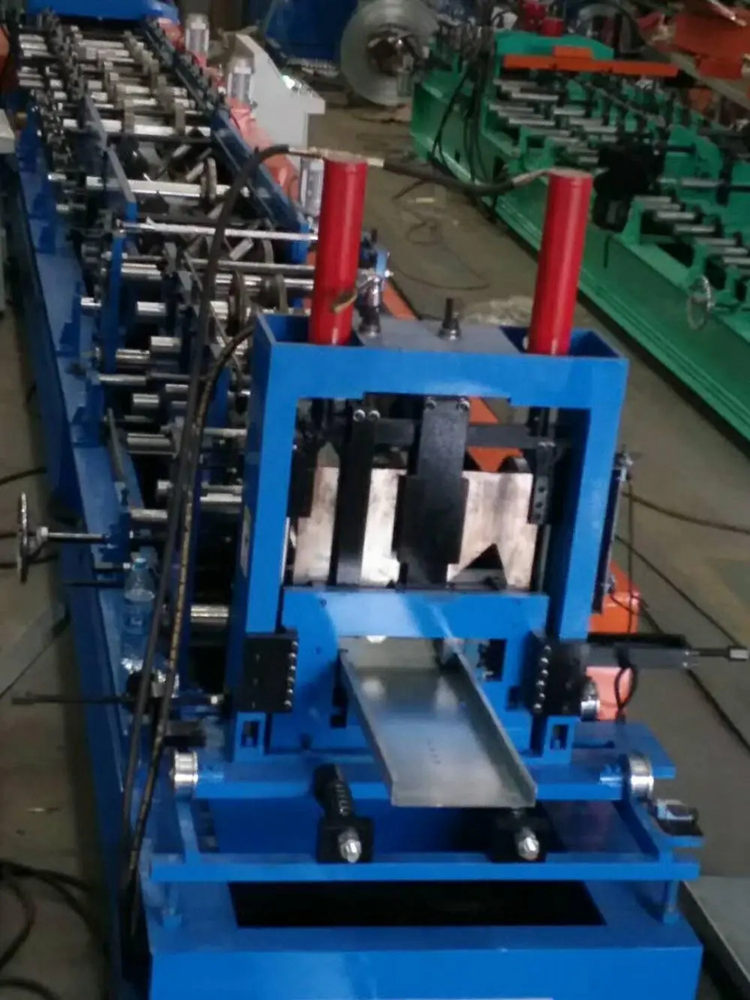
Gutter Downpipe Roll Forming Machine An Overview
In the construction and building materials industry, efficiency and precision are key to meeting the high demands of modern architecture. One crucial element of building exteriors that requires careful consideration is the drainage system, specifically gutters and downpipes. The production of these essential components has significantly advanced with the introduction of gutter downpipe roll forming machines. This article explores the importance, working principle, and benefits of these machines in the manufacturing process.
Importance of Gutters and Downpipes
Gutters and downpipes play an essential role in managing rainwater drainage from roofs. They prevent water accumulation, reducing the risk of structural damage, mold growth, and deterioration of building materials. A well-designed drainage system also contributes to the aesthetic appeal of a building, making gutters and downpipes not only functional but also a vital component of architectural design.
As the demand for custom designs and high-quality materials increases, the need for efficient production methods has become more apparent. This is where the gutter downpipe roll forming machine comes into play.
How Gutter Downpipe Roll Forming Machines Work
Gutter downpipe roll forming machines are specialized pieces of equipment designed to produce gutter and downpipe profiles with high accuracy and minimal waste. The process begins with a coil of metal, typically galvanized steel or aluminum, which is the raw material for the gutters.
1. Feeding and Uncoiling The production process starts with feeding the metal coil into the machine. The coil is unrolled and guided into the forming section of the machine.
2. Cold Forming Process The metal strip is then passed through a series of rollers that gradually shape it into the desired profile. This cold forming process is precise and allows for the production of complex shapes that can be customized according to customer specifications. The rollers adjust the thickness and shape without compromising the integrity of the metal.
3. Cutting Once the desired profile is achieved, the continuous length of metal is cut to the required length using an automated cutting system. This ensures that each downpipe produced is uniform and meets the specified dimensions.
4. Finishing Touches Finally, additional processes like punching holes for brackets or applying protective coatings can be completed before the finished product is packaged and shipped.

Benefits of Using Roll Forming Machines
The adoption of gutter downpipe roll forming machines offers numerous advantages for manufacturers and builders
1. High Efficiency Roll forming is a continuous process that can produce large quantities of gutters and downpipes in a short amount of time. This efficiency not only meets high demand but also reduces labor costs.
2. Customization These machines can produce a wide variety of profiles and designs, allowing manufacturers to cater to different architectural styles and customer specifications.
3. Material Utilization The roll forming process minimizes waste material, as the metal is shaped progressively into the desired pattern, allowing for more economical use of raw materials.
4. Durability and Strength The cold-formed products exhibit superior mechanical properties, providing enhanced durability and resistance to environmental factors.
5. Quality Control The automated nature of roll forming machines ensures consistent quality in the final products, with precise dimensions and high-quality finishes.
6. Reduced Lead Time The rapid production capabilities of roll forming can significantly reduce lead times for construction projects, allowing contractors to complete projects more swiftly.
Conclusion
Gutter downpipe roll forming machines represent a significant advancement in the manufacturing of essential building components. With their ability to produce high-quality, customized products efficiently, these machines meet the growing demands of the construction industry while enhancing sustainability through reduced material waste. As innovation continues within the field of construction technology, the impact of roll forming machines on the production of gutters and downpipes will undoubtedly pave the way for even more efficient building practices in the future. For architects, builders, and manufacturers alike, investing in this technology is a step towards a more efficient and effective building process.